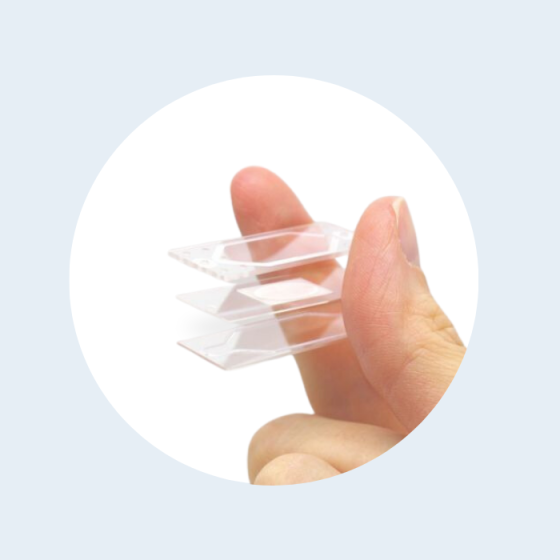shopping_basket
Custom EOR Chips
Price on Request
SKU
Custom-EOR-Chips
Optimize enhanced oil recovery with custom EOR chips tailored to your needs. Micronit offers precision-engineered microfluidic solutions for improved efficiency. Contact us for bespoke EOR chip designs.
Customer Questions
How do I clean my uncoated chips?
1) Flush an alkaline solution through the channels, like 1 M sodium hydroxide in water.
2) A water bath with ultrasonic agitation can be used to remove particulated matters, keep energy levels initially low to prevent potential damages.
3) Glass microchips can be heated (e.g. 400°C) causing any organic material on the glass surface to degrade. Try to use lower temperatures first because burning the content could make it stick.
4) Concentrated sulfuric acid works well to dissolve organic material, such as fibres, that are difficult to remove with alkaline solutions.
Which pressure and temperature can the EOR chip hold?
The EOR chip itself is manufactured from glass and can easily withstand up to 300⁰C. The chips are supplied in a black fluidic cartridge however, this cartridge can withstand up to 80⁰C.No sealant is used, the two layers of glass are fusion bonded together.The chip can withstand easily up to 100 bar. The external interfacing is more critical however. Our Fluidic Connect holder offers the largest pressure, up to 80 bars (maybe less at elevated temperatures). Please note that it might be helpful to practice a little with the Fluidic Connect holder first. You need to get the feeling to apply not too much force, which might break the chip, but enough to obtain sufficient sealing. It might be necessary to tighten a bit more when pressure and temperature are increased. Please remove the pressure before additional tightening.
I'm using the Fluidic Connect 4515 holder (part of high pressure bundle), what alignment and fluidic port should I use?
The fluidic ports are on positions 3 and 8
Alignment can be done on positions 2 and 7 (or 4 and 9).
See "Read More" for details.
I have a Elveflow OB1 pressure based pump what connectors do I need?
You need a combination of items supplied by Elveflow and Micronit. Please take a look at the full answer for more details.
I have a Fluigent pressure based pump, what connectors do I need?
See "Read More" for advice.
What's important in selection of a suitable microscope objective?
The objective working distance is a critical parameter for selection of an objective. See "Read More" for recommendations.
What is the roughness of the etched structures?
Wet etched structures are extremely smooth and have a roughness in Angstrom range. The structures are fully optical transparent.
How should I connect the chips to a pump?
Micronit offers a range of chip holders designed to ensure reliable and convenient interfacing between your chip and fluidic tubing. See "Read More"for additional information and links.
Are there alternatives to a chip holder?
While alternatives to a chip holder are available, their implementation is complex and not generally recommended. Further information can be found under “Read More”.
Are combi-packs available, or can pack contents be mixed?
We understand your interest in exploring different options; however, it’s important to have a sufficient number of chips of the same type to ensure consistent and reliable experimental results — as one test is not test.
For this reason, we do not offer combi-packs. Mixing the contents of existing packs is also not possible for practical reasons.
How to clean a chip with coating?
Chips that have Micronit’s standard hydrophobic coating can be cleaned with most organic solvents.
Would you like to submit a question? Please login first.

